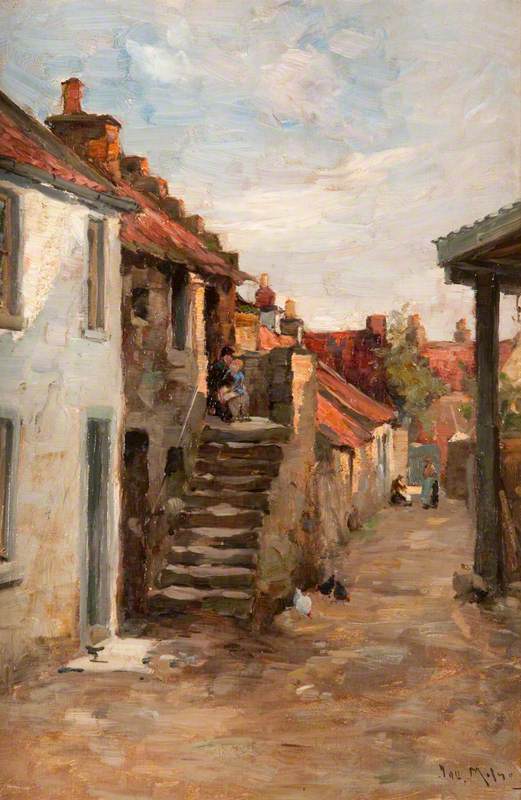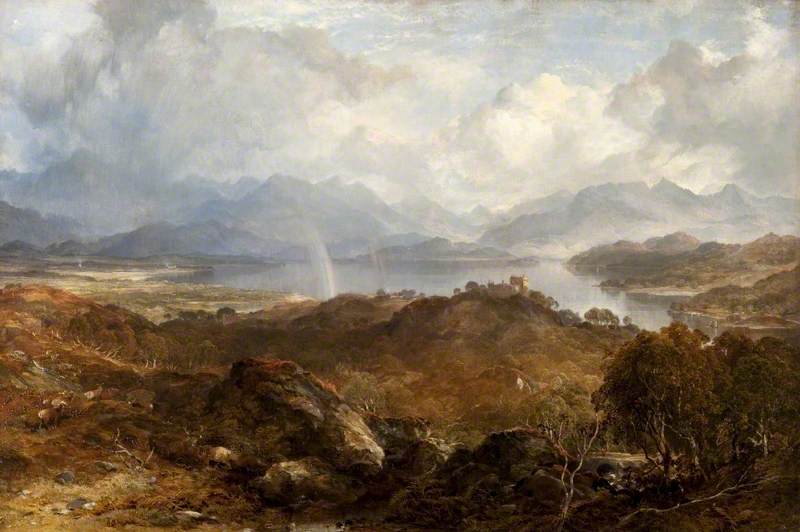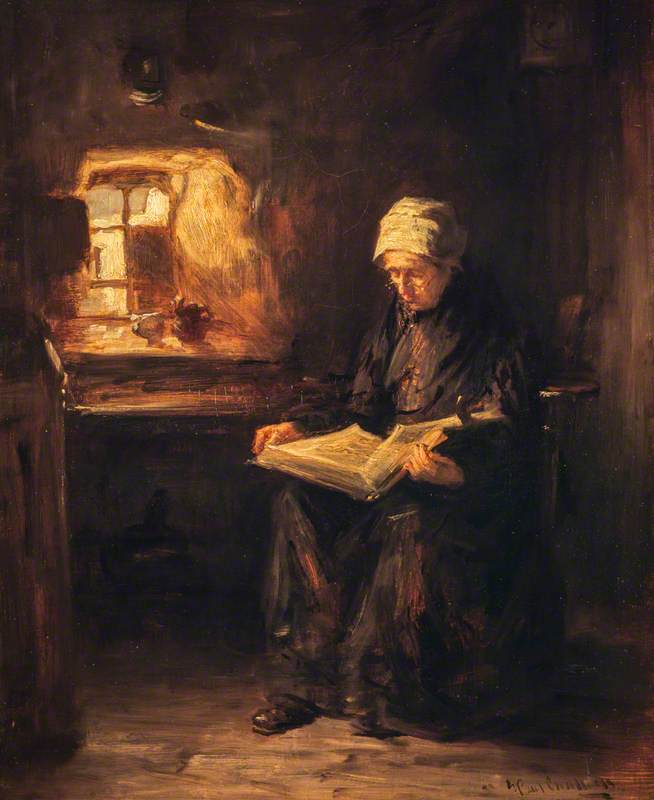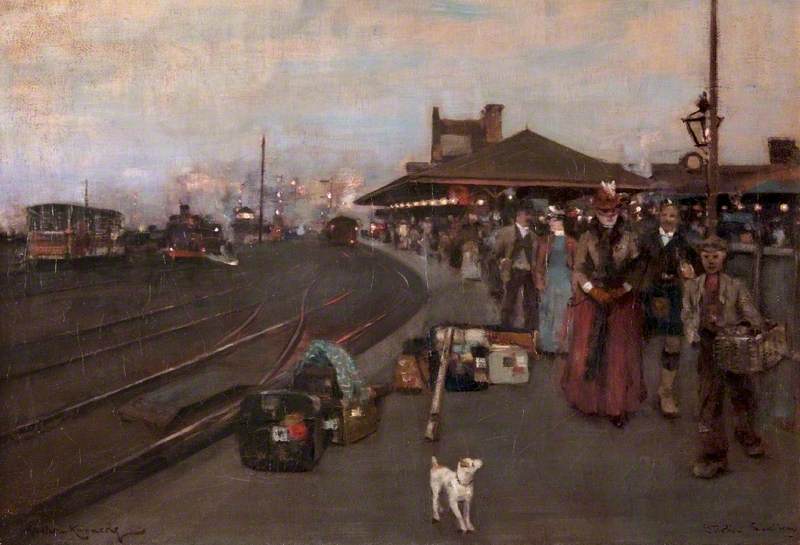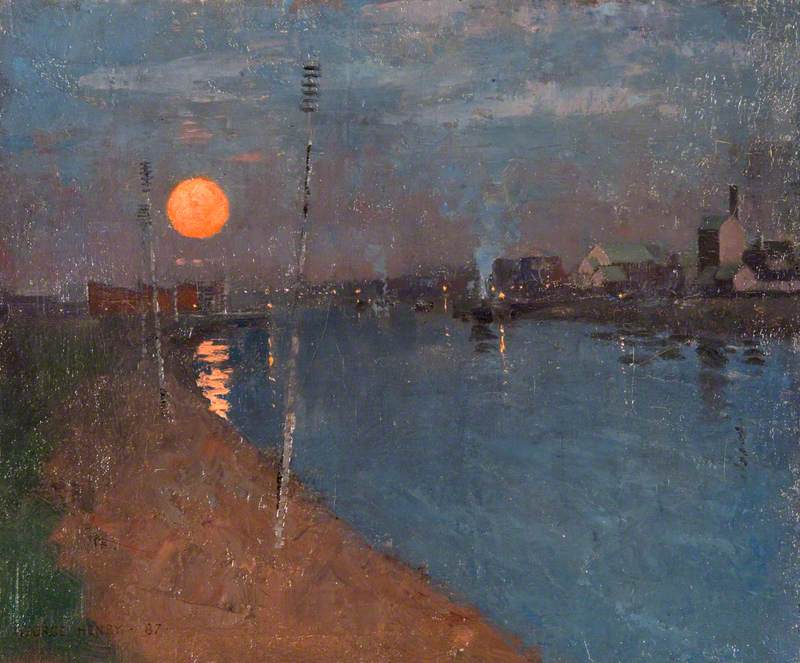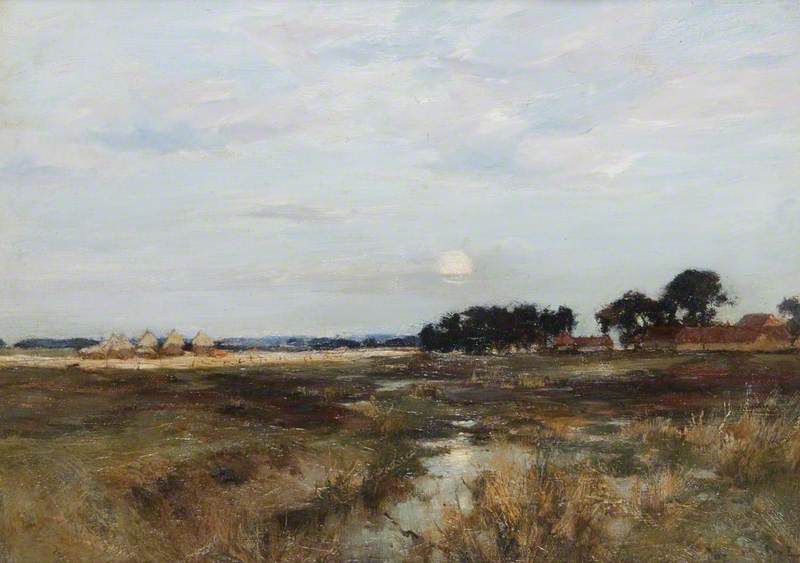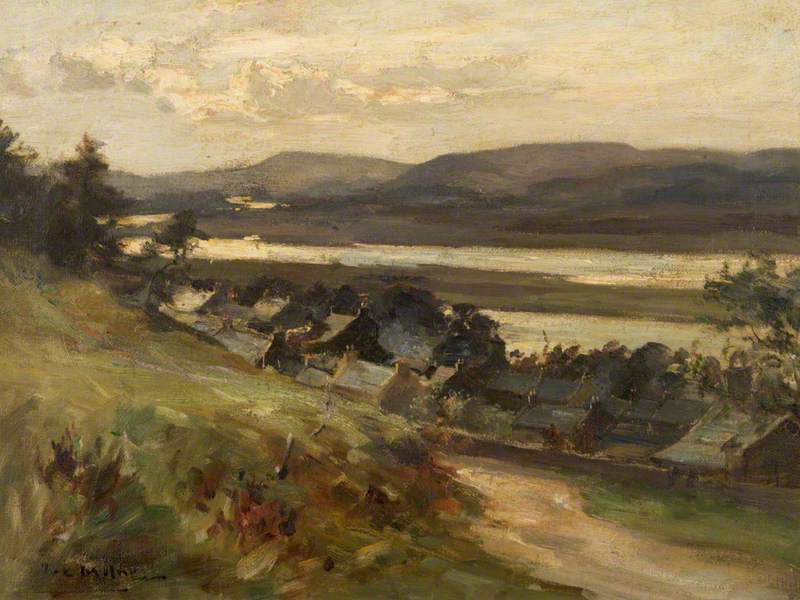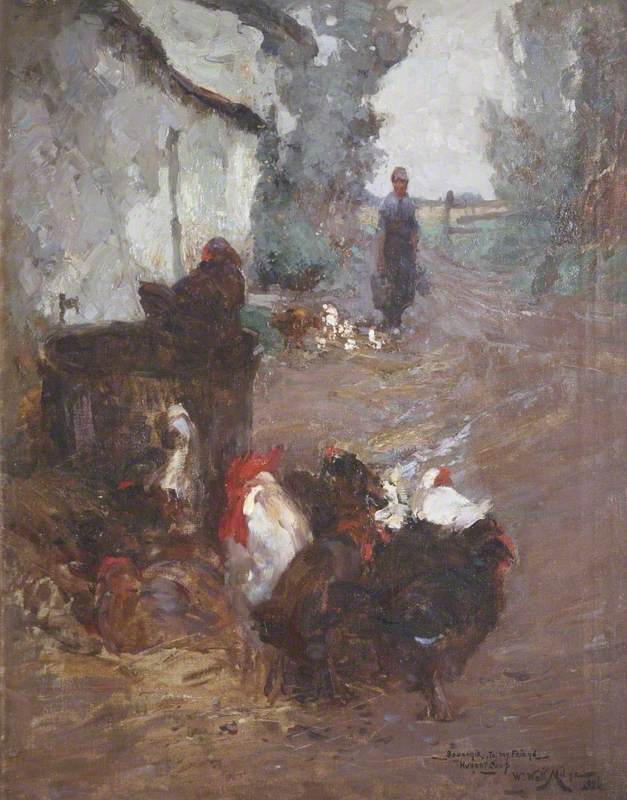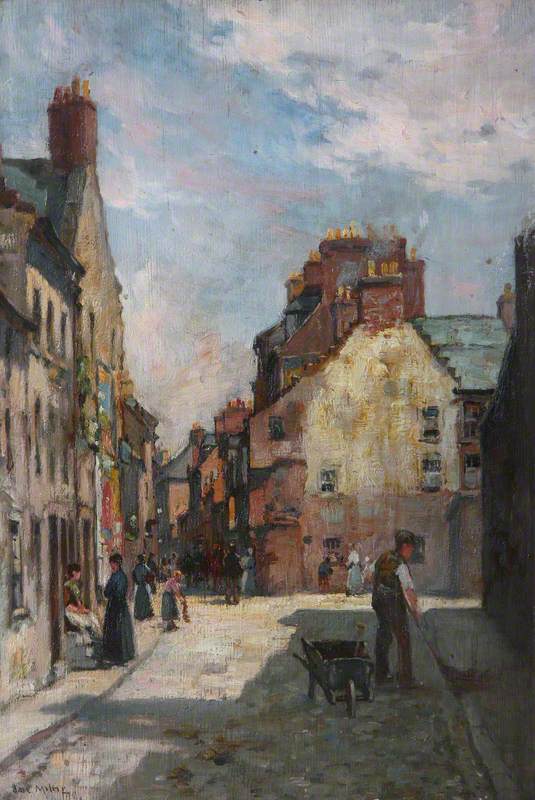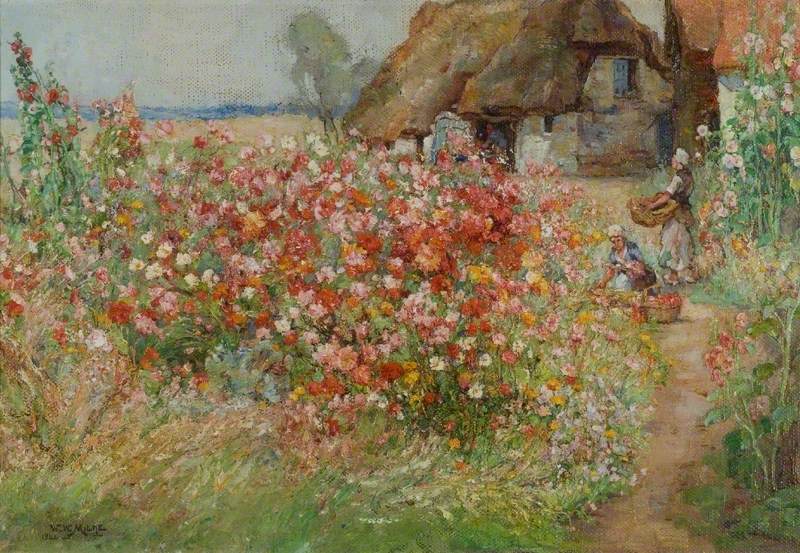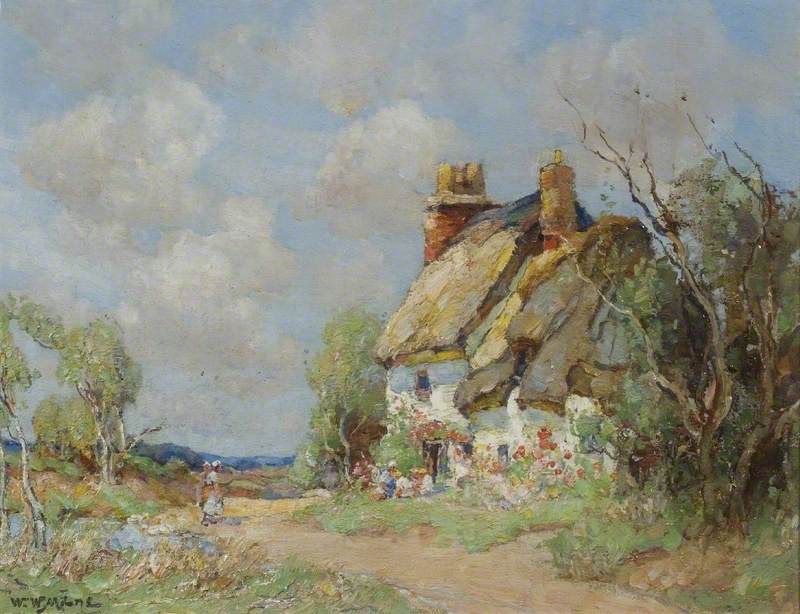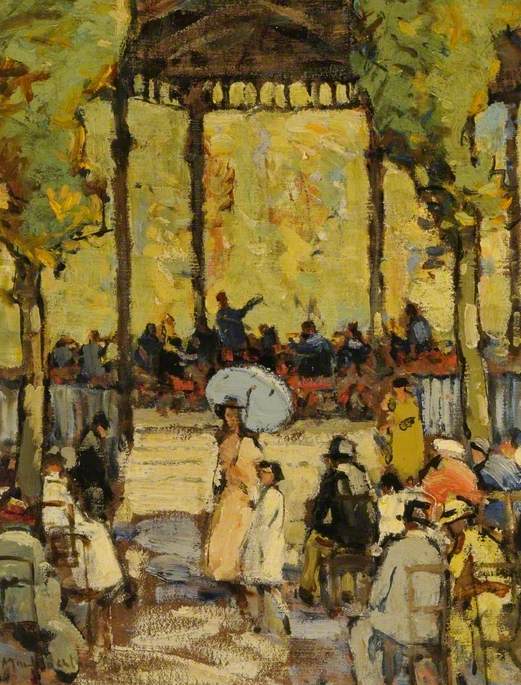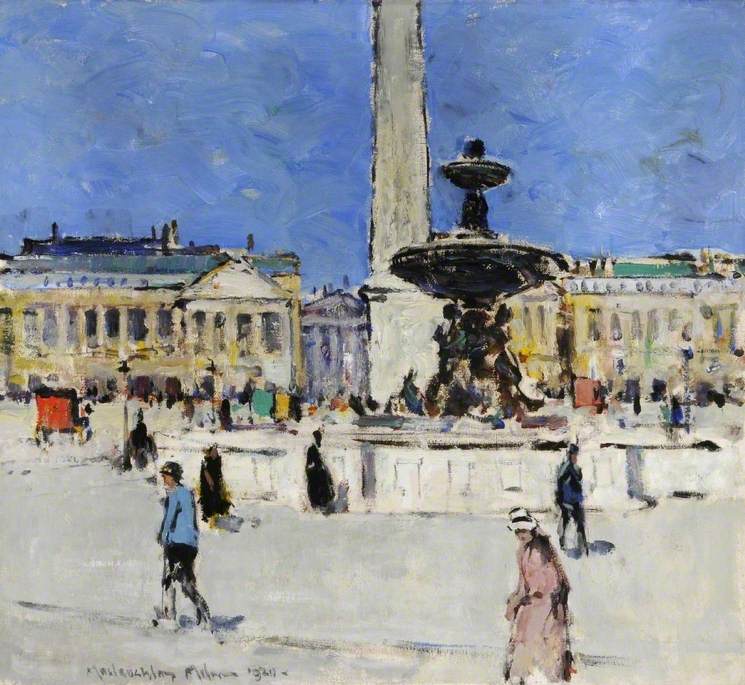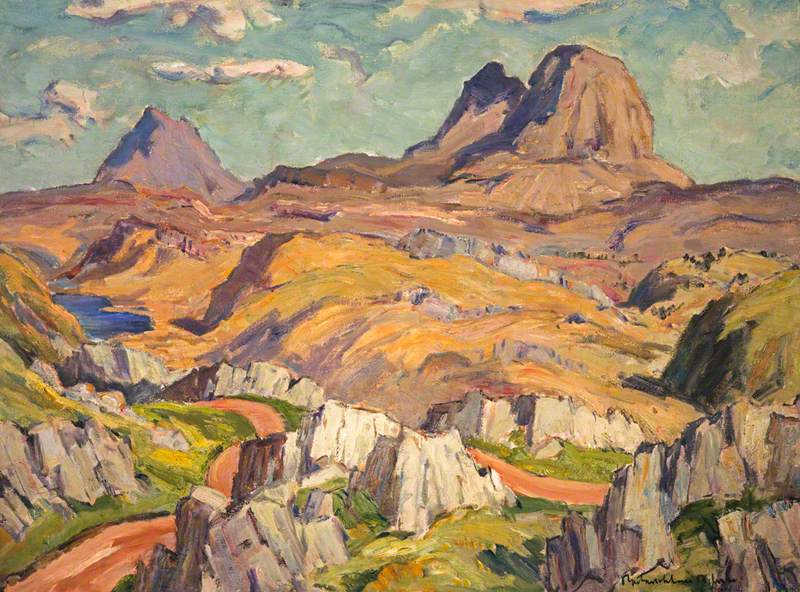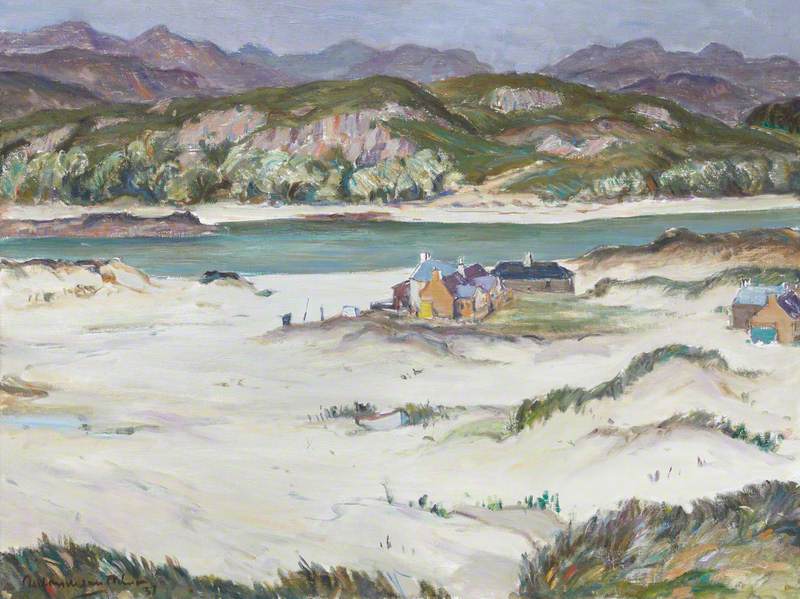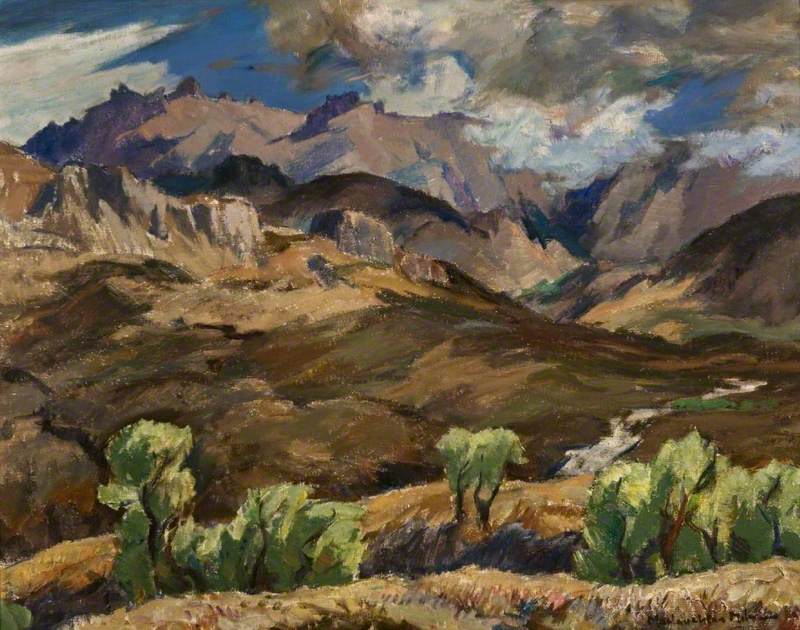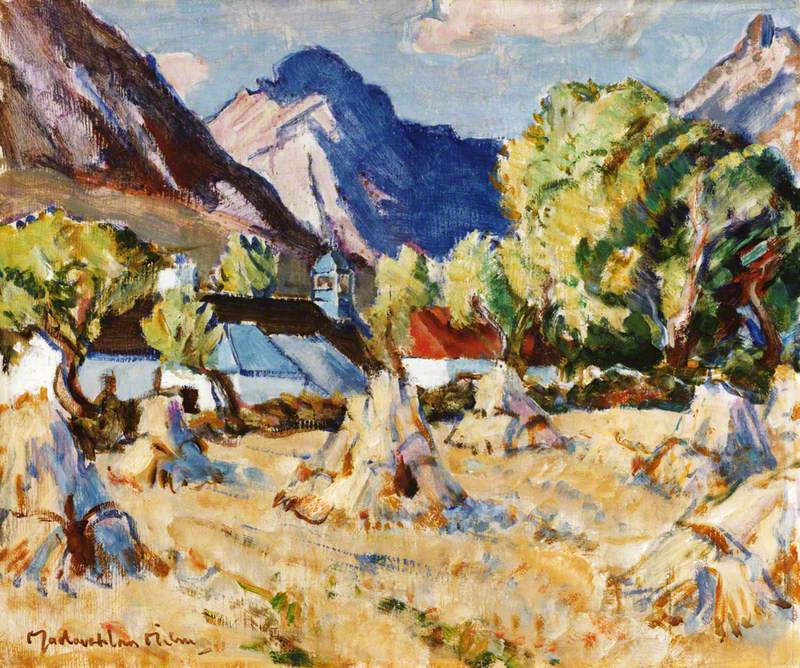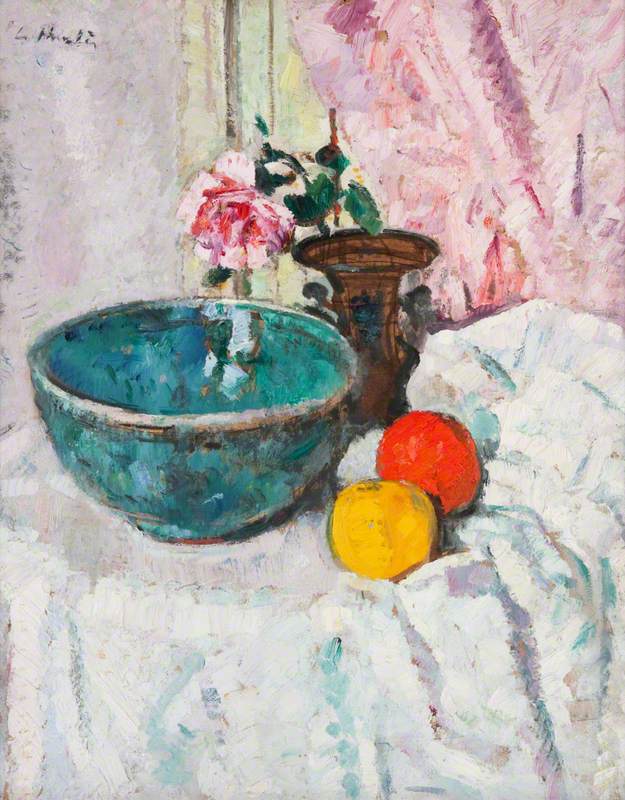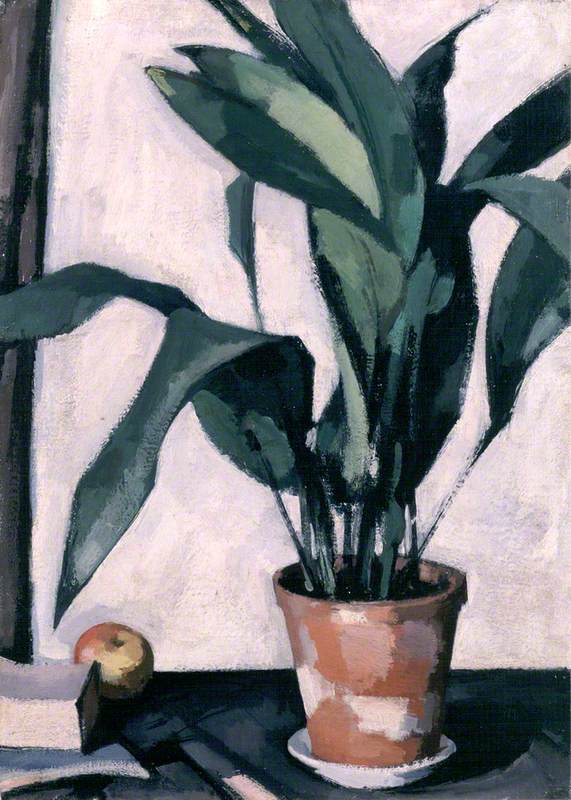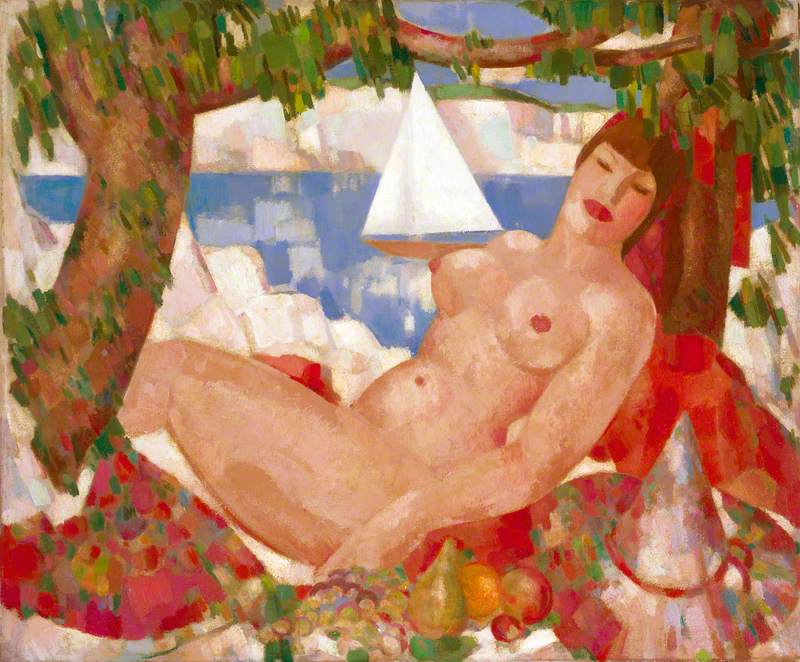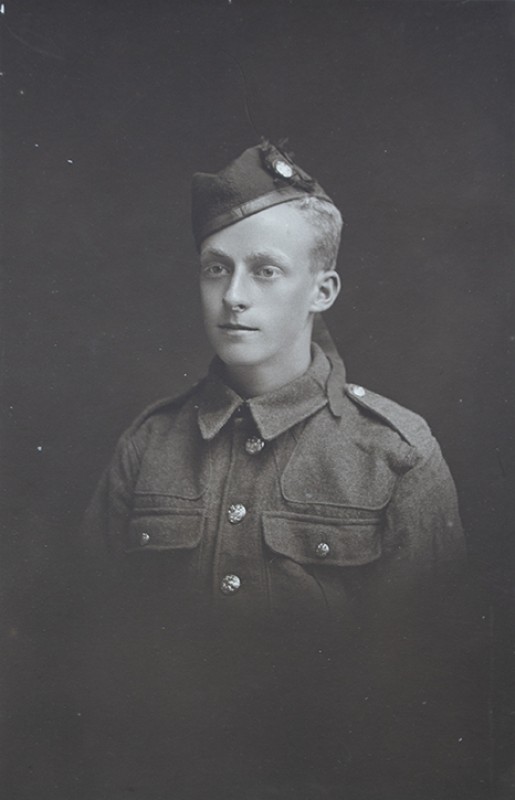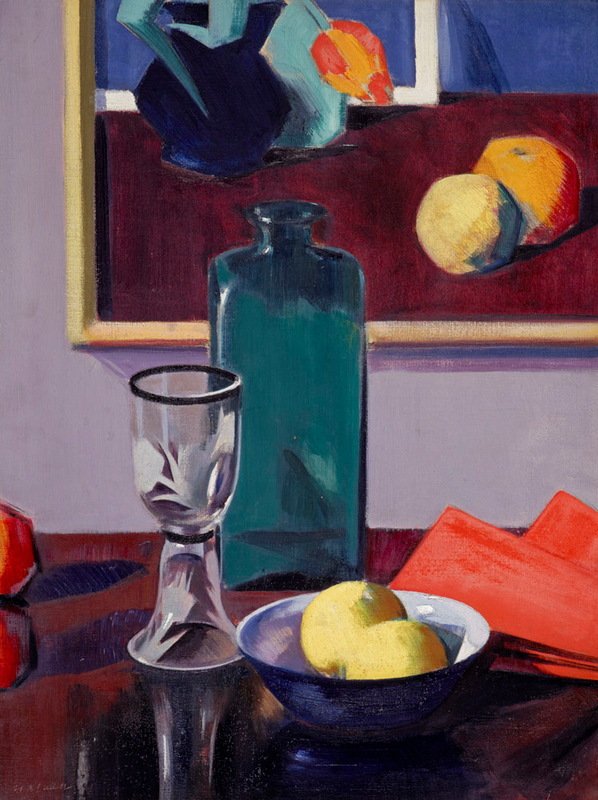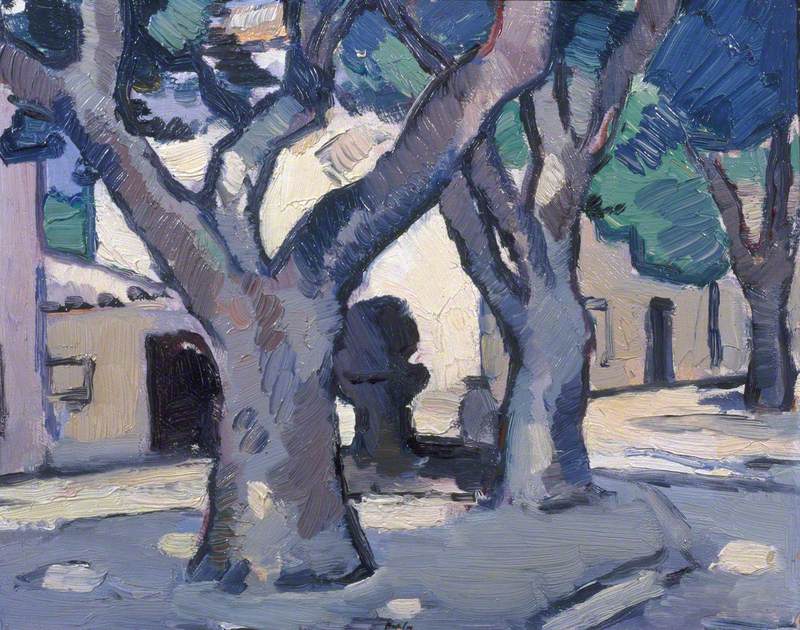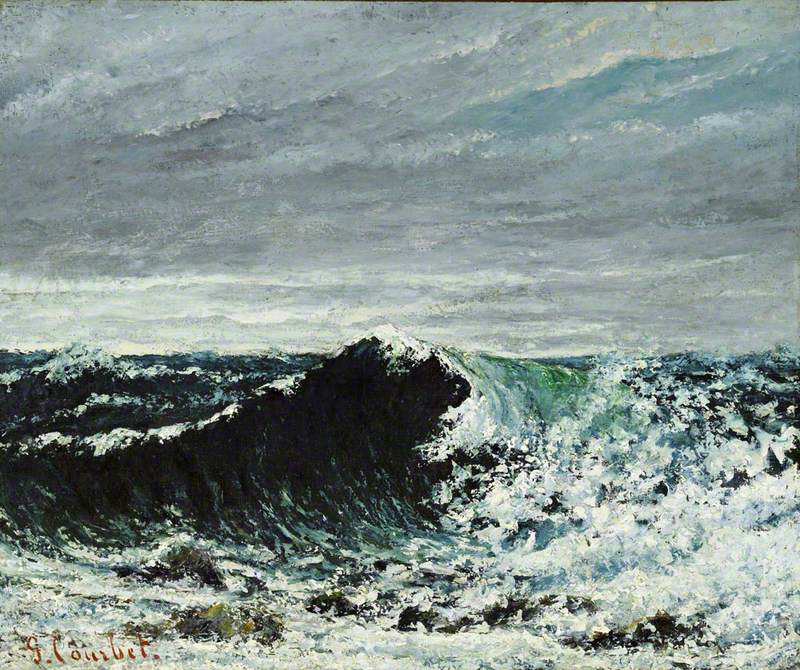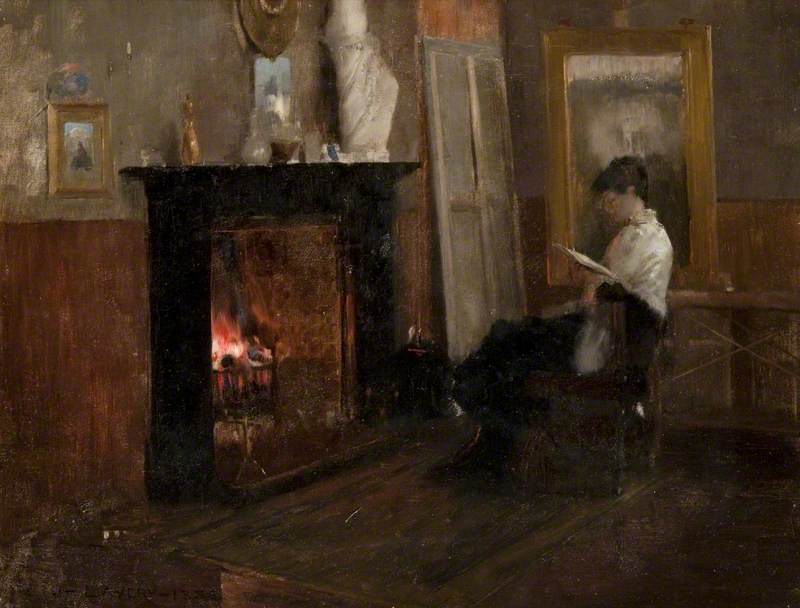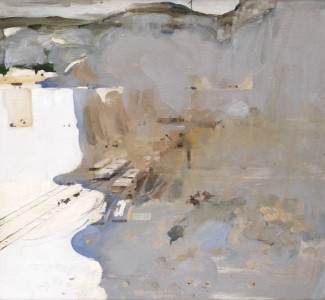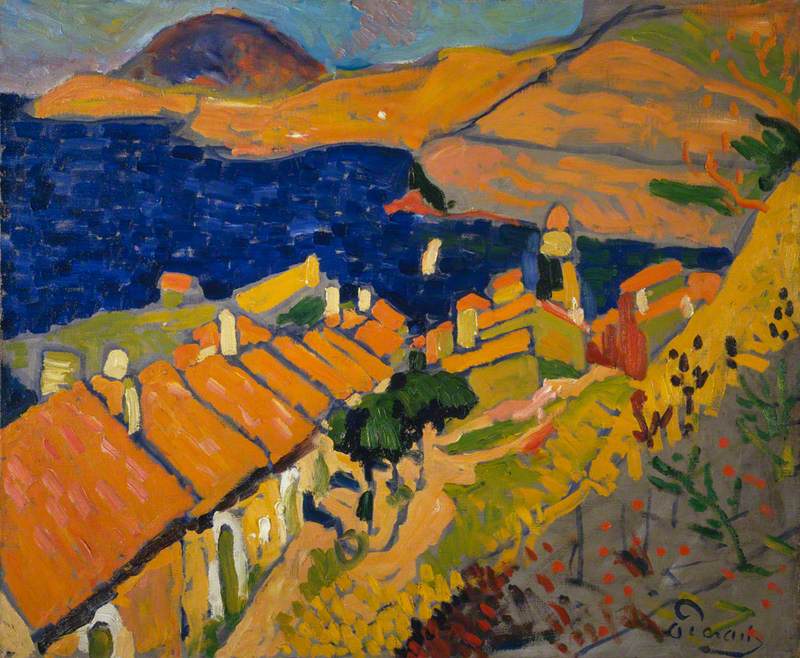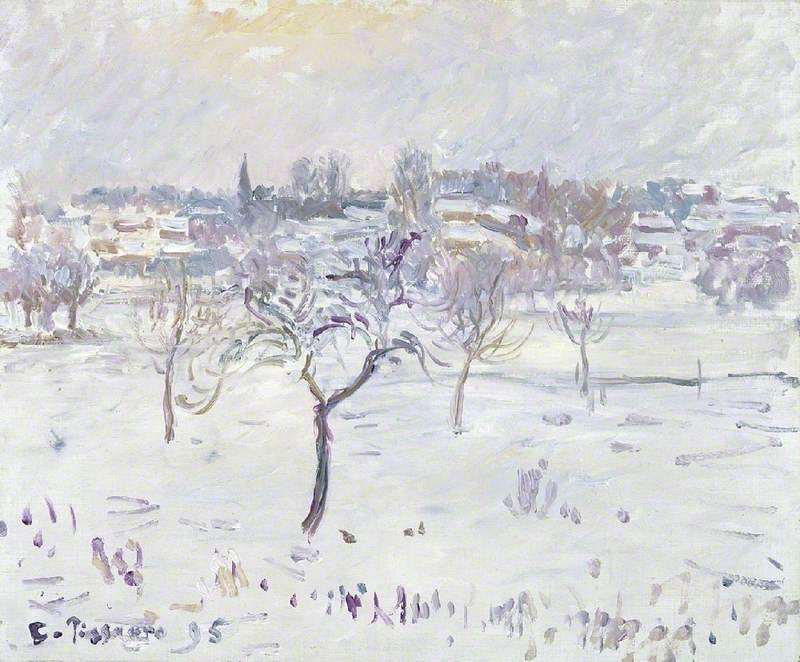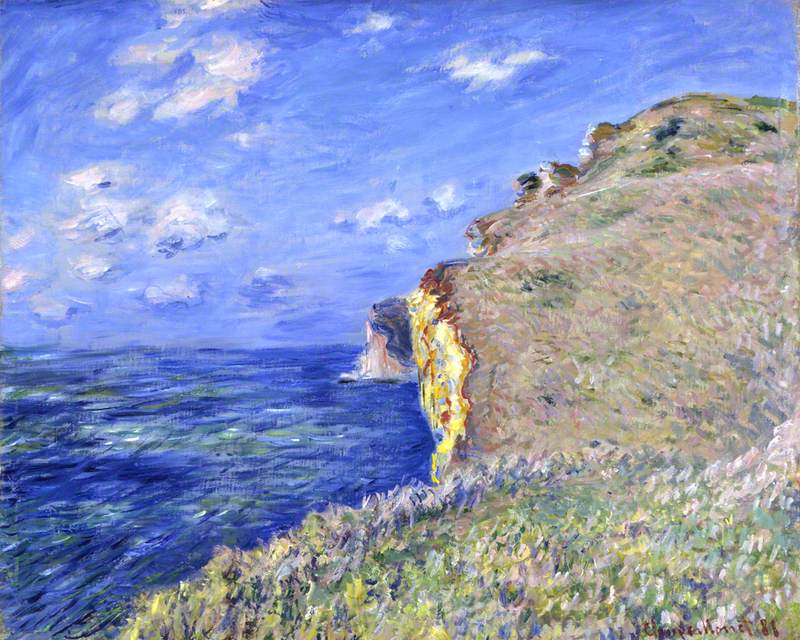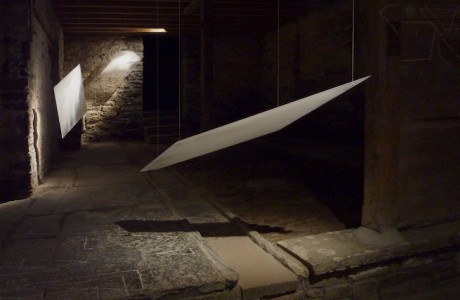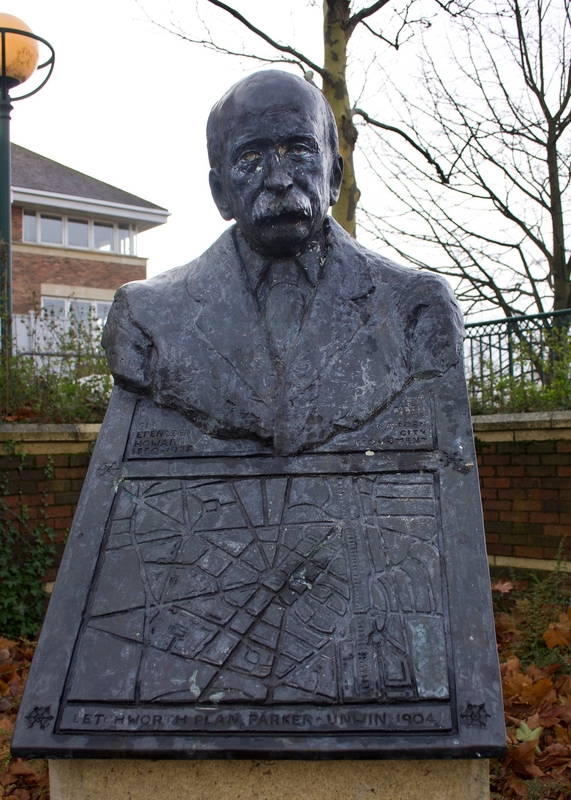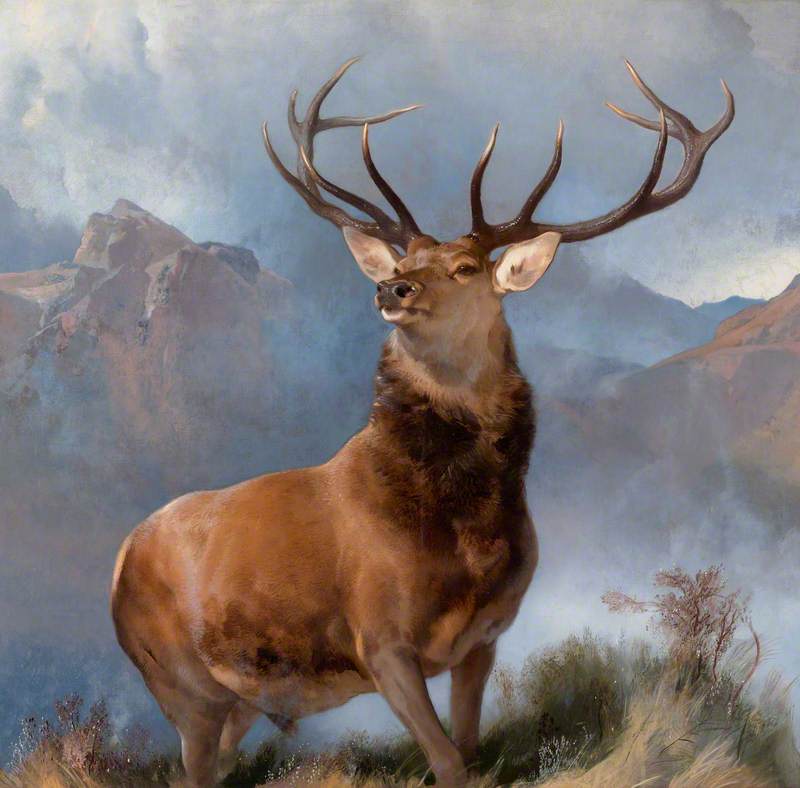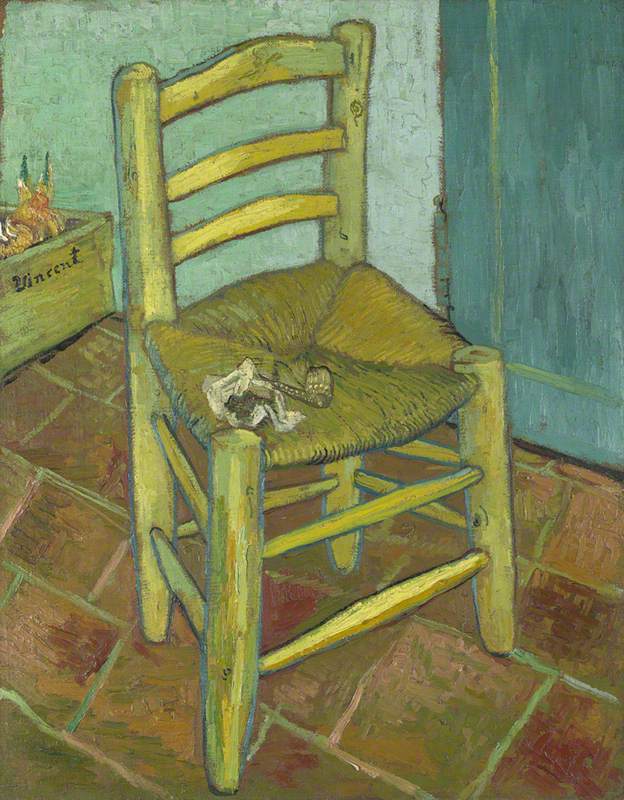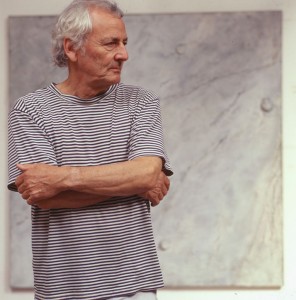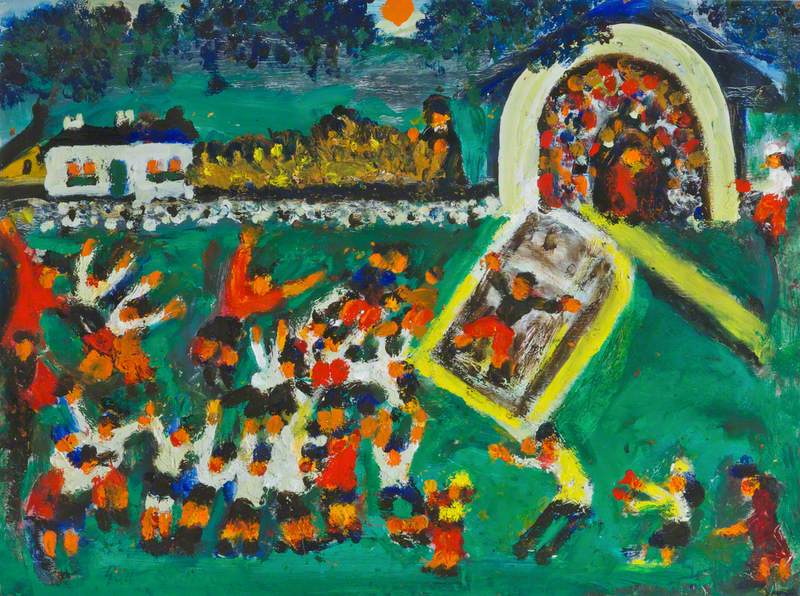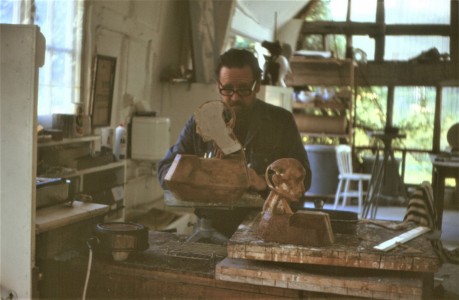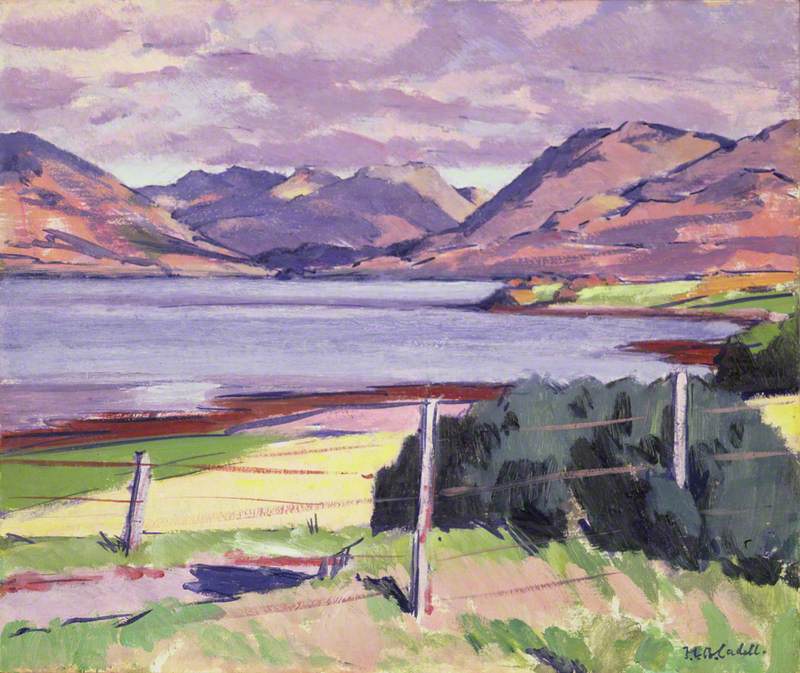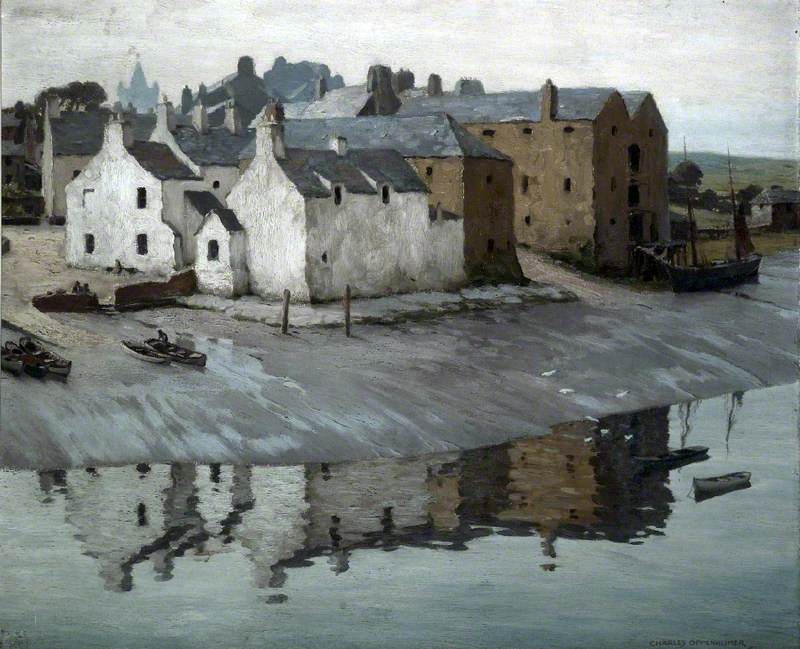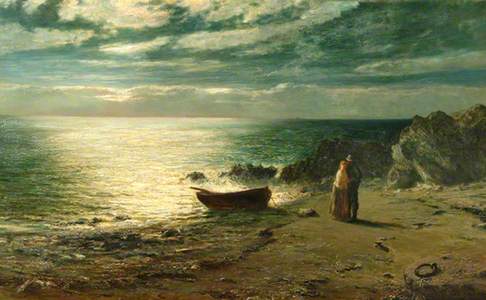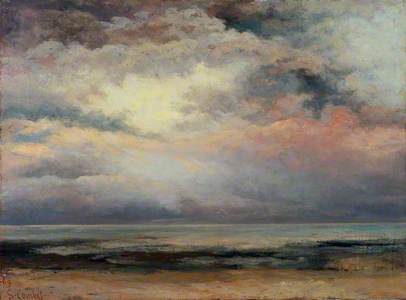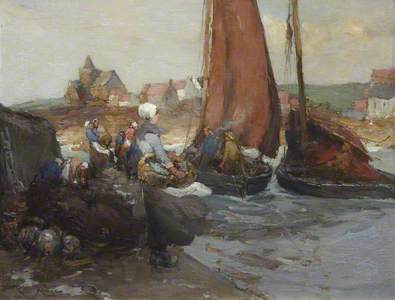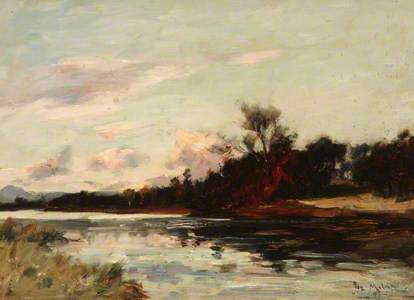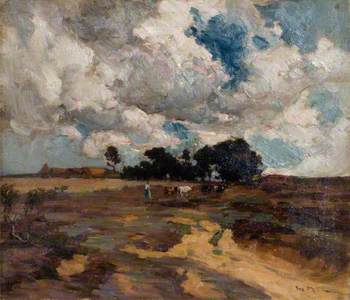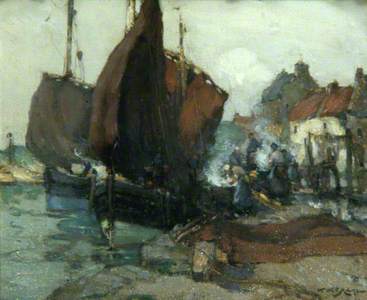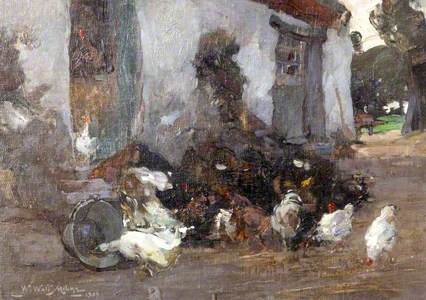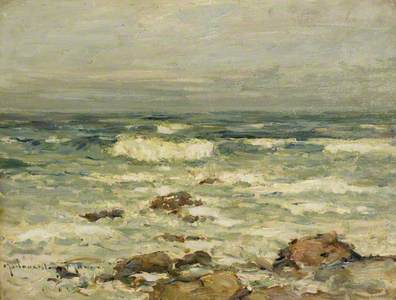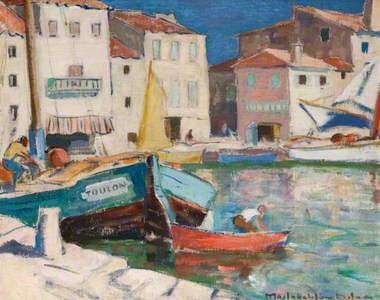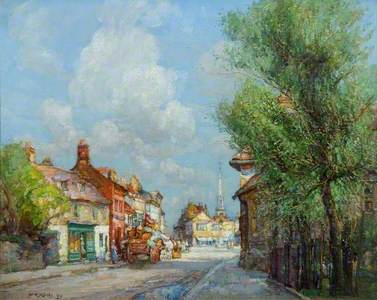'I think that I was born inhaling oil paint', commented John Maclauchlan Milne RSA (1885–1957) on his long career as an artist, in a letter to Glasgow Art Galleries Director, Dr Tom Honeyman in March 1955.
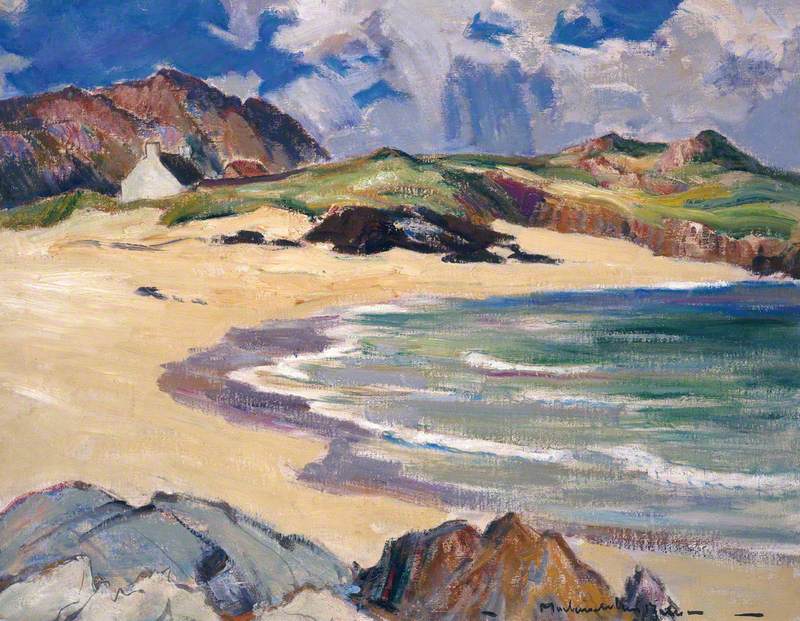
© John Maclauchlan Milne, courtesy of Portland Gallery, London. Image credit: Museums & Galleries Edinburgh – City of Edinburgh Council
John Maclauchlan Milne (1885–1957)
Museums & Galleries Edinburgh – City of Edinburgh CouncilMore recently, he has been described as the 'Missing Colourist' in relation to the Scottish Colourists – Samuel John Peploe, John Duncan Fergusson, Francis Campbell Boileau Cadell and George Leslie Hunter.
Such an intriguing perspective was asking to be explained. We discovered that his father, Joseph 'Joe' Milne (1859–1911), and his uncle, Joe's brother, William Watt Milne (1865–1949) were also professional artists. Their achievements opened up a fascinating insight into the powerful forces changing Scottish art in the latter half of the nineteenth century, through to Maclauchlan Milne's little-appreciated breakthrough into early twentieth-century Modernism.
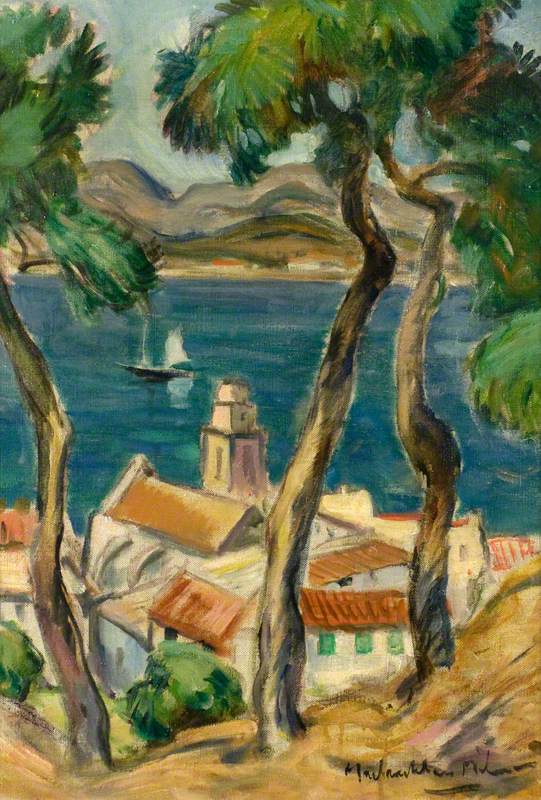
© John Maclauchlan Milne, courtesy of Portland Gallery, London. Image credit: Dundee Art Galleries and Museums Collection (Dundee City Council)
John Maclauchlan Milne (1885–1957)
Dundee Art Galleries and Museums Collection (Dundee City Council)Aberdeen-born and Edinburgh-trained, from aged 18 years, Joe Milne exhibited at the Royal Scottish Academy, the Glasgow Institute and within ten years, at the Royal Academy in London.
At the time Joe and William started out, grand panoramas of scale and effect like 'My heart's in the Highlands' by Horatio McCulloch RSA or 'Night, most glorious night, thou wert not made for slumber' by John MacWhirter RA, with sentimental storytelling situations and a high degree of finish, were standard fare at the national art institutions.

Image credit: Royal Holloway, University of London
‘Night, most glorious night, thou wert not made for slumber’ 1874
John MacWhirter (1839–1911)
Royal Holloway, University of LondonJoe taught his younger brother William as a teenager before he too went to art school, and both enrolled at the prestigious Royal Scottish Academy of Art Life Classes: Joe in 1882 and again in 1885; William from 1884 through to 1890. Clearly both were talented, each being awarded several prizes, including the Chalmers Bursary won by William in 1889.
Nevertheless, the brothers belonged to a generation of upcoming artists who chose to paint the landscape as it presented itself to them. If there are figures, there is no story, only that they are part of the landscape. They were influenced by the realism that came from a group of French artists at Barbizon in the mid-nineteenth century, who painted direct scenes of peasant life and landscape on the spot. They included the much-admired Gustave Courbet.
Eschewing the popularity of Highland landscapes, Joe painted lowland areas and not confined to Scotland either – by 1886 he had painted in North East England, London and the Netherlands.
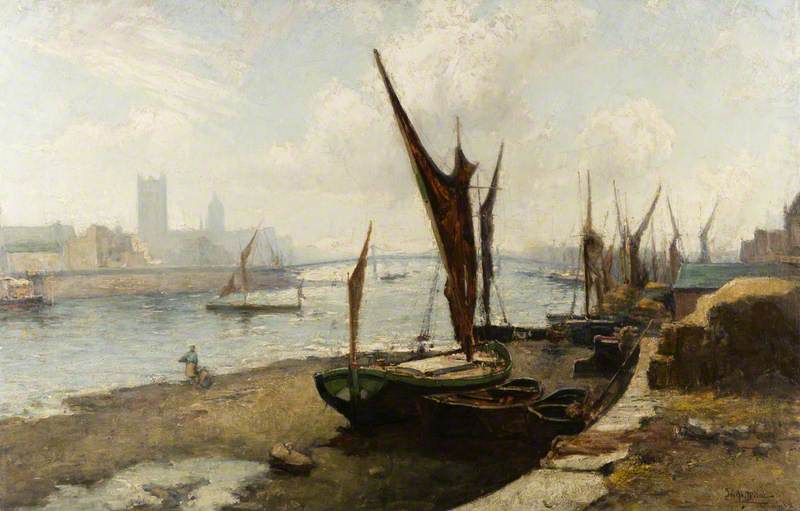
Image credit: Perth & Kinross Council
Thames Barges (previously known as 'On the Thames') c.1880
Joseph Milne (1859–1911)
Perth & Kinross CouncilPopular among Scottish artists and collectors, Joe would also have known the work of Dutch realist artists from The Hague School, such as Anton Mauve or Willem Maris who were also inspired by the Barbizon painters. Courbet's later landscapes often featured a low horizon where nature is observed simply for its own sake such as L'Immensité which was exhibited at the Edinburgh International Exhibition in 1886. There is every possibility Joe and William viewed it and similar paintings because from that date Joe's painting style took on a similar format and tone.
From Tay Backwater Kinfauns, Perthshire, exhibited at the Royal Academy in 1886 and steadily into the 1890s, such influences underpinned his work.
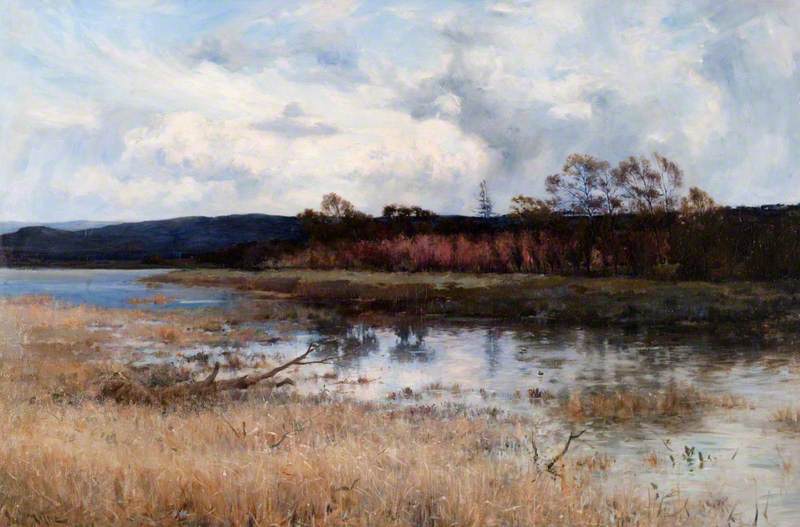
Image credit: Dundee Art Galleries and Museums Collection (Dundee City Council)
Tay Backwater Kinfauns, Perthshire 1886
Joseph Milne (1859–1911)
Dundee Art Galleries and Museums Collection (Dundee City Council)
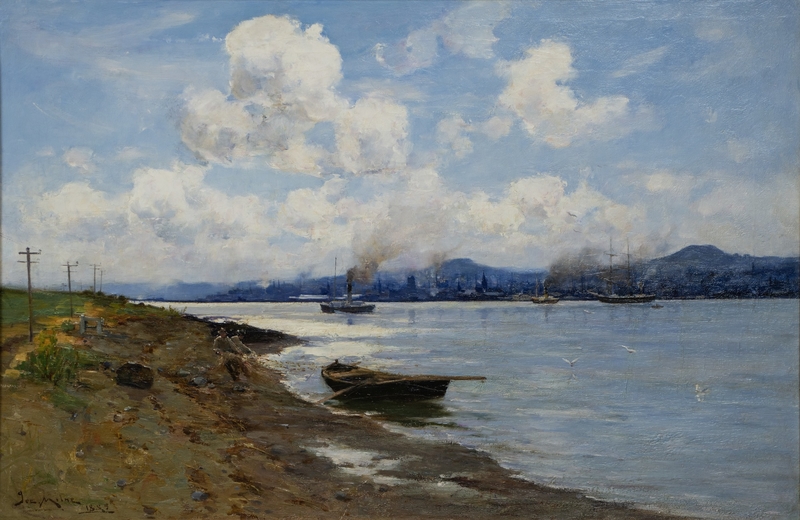
Image credit: Dundee Art Galleries and Museums Collection (Dundee City Council)
Joseph Milne (1859–1911)
Dundee Art Galleries and Museums Collection (Dundee City Council)
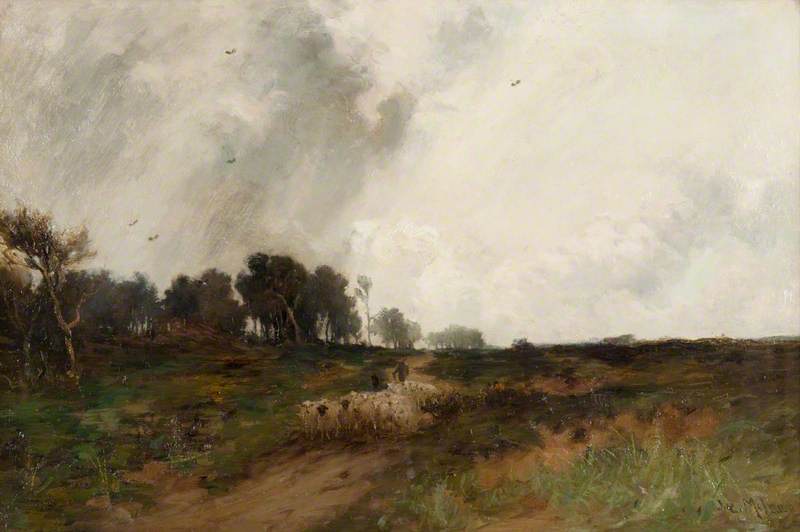
Image credit: The Orchar Collection: Dundee Art Galleries and Museums (Dundee City Council)
Joseph Milne (1859–1911)
The Orchar Collection: Dundee Art Galleries and Museums (Dundee City Council)For the next ten years, Joe and William painted on the Scottish artist colony circuit: East Linton in the Lothians, Tayside, and the coastal fishing villages of St Monans and Pittenweem in Fife. William's early style showed affinities with the free use of colour and loose brushwork of fellow Scot, George Paul Chalmers RSA, whose dimly lit interiors with an old woman by a window were popular.
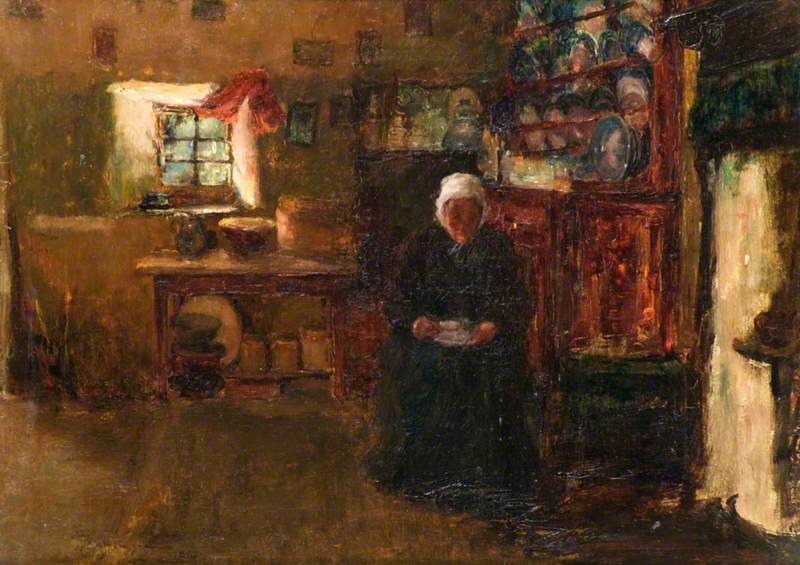
Image credit: Dundee Art Galleries and Museums Collection (Dundee City Council)
William Watt Milne (1865–1949)
Dundee Art Galleries and Museums Collection (Dundee City Council)Although not one of the 'Glasgow Boys' (a group of artists who flourished between 1880 and 1895), by 1889 and to a greater degree than Joe, William absorbed many of the qualities of the Boys' style; a joy in the loveliness and colour of nature, along with an artist's pleasure in his material such as in works by William Kennedy or George Henry.
William continued in this vein with A Crofter's Biggin from 1889 and St Monans: A Fishing Village with Women on the Quay.
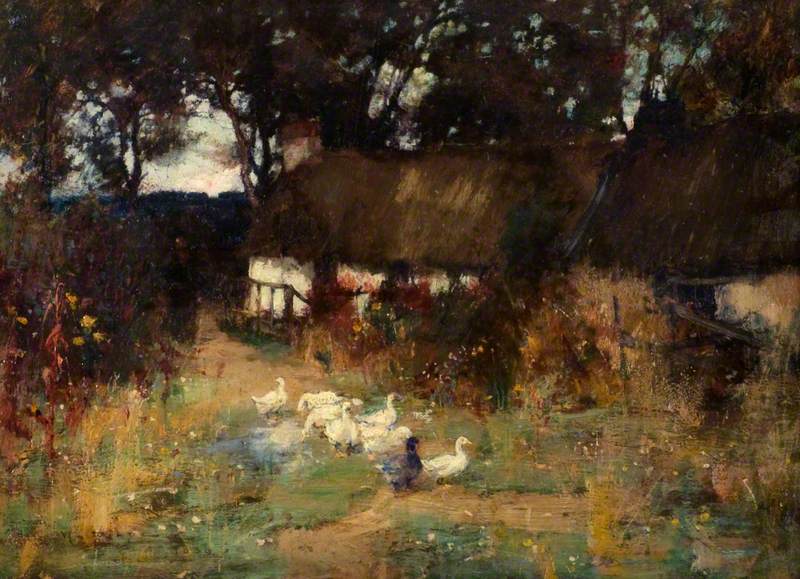
Image credit: Dundee Art Galleries and Museums Collection (Dundee City Council)
William Watt Milne (1865–1949)
Dundee Art Galleries and Museums Collection (Dundee City Council)
Joe's transition begins in around 1891 with Farm Buildings, Dusk.
A comparison of Tay Backwater Kinfauns, Perthshire from 1886 and his 1895 The Tay at Woody Island shows the shift in Joe's approach, and a definite move to exploring colour and form with looser brushwork in Droving the Cattle and Mugdrum Island from above Newburgh.
The brothers tried different painting grounds with William in Dublin in 1895, and Joe in Argyll and the Borders but both returning to Fife on and off until 1903 when Joe's bankruptcy resulted in them going their separate ways.
By then, to differentiate his work from an artist of the same name, William added 'Watt' to his signature. His work continued to develop – painting in Fife, at Cambuskenneth, Stirling where he also took on pupils, and in 1912 at Berneval in France, where Renoir and Pissarro had painted.
Maclauchlan Milne chose to emigrate to Canada, while Joe took the family to London to recover his career – but by 1908, Maclauchlan Milne had returned. After Joe exhibited one final picture at the RA that year, the family returned to Scotland, settling in Dundee where Joe died three years later.
William's final move came in 1914, joining the lively artist colony at St Ives, Huntingdonshire. Other Glasgow Boys had painted south of the border after 1900 where their tonal values prevailed – as in William Kennedy's Evening in Berkshire.
Not so with William who spent the remainder of his long life painting the River Ouse and its rural villages – A Cottage Garden at Sawtry and A Thatched Cottage at Houghton – realism having truly given way to strong form, brushwork and colour.
Maclauchlan Milne's early painting style until 1920 is similar in approach and design to Joe's landscapes and possibly his Uncle William's vibrant brushwork.

© John Maclauchlan Milne, courtesy of Portland Gallery, London. Image credit: Dundee Art Galleries and Museums Collection (Dundee City Council)
John Maclauchlan Milne (1885–1957)
Dundee Art Galleries and Museums Collection (Dundee City Council)

© John Maclauchlan Milne, courtesy of Portland Gallery, London. Image credit: Dundee Art Galleries and Museums Collection (Dundee City Council)
John Maclauchlan Milne (1885–1957)
Dundee Art Galleries and Museums Collection (Dundee City Council)He had served in the Royal Flying Corps from 1917, was demobbed in 1919 and arrived in Paris in 1920. Nothing would be the same again. His RSA obituary observes: 'Like Peploe, he saw Cézanne and was immediately conquered.'
That he ranked among only a handful of Modernist artists in 1921 is confirmed by Scottish Colourist, Leslie Hunter: 'I hope he recruited his strength in form and colour. Apostles of that order are few enough in the Country.'
His conversion was immediate. In Concert au Jardin du Luxembourg, Paris, Milne has taken the essence of a sunny afternoon in the park, translated it into colour planes, and animated it with fluid brushwork.
In Obelisque de Luxor, Paris, the effect on pedestrians, bowed by brilliant sunshine on the wide-open space of the Place de la Concorde shows where his thinking was going. He was painting sensations and by the time he arrived in the South of France, the heart of his focus was fully formed.
In March 1925, the Dundee Courier newspaper vividly reported the impact of his conversion. 'A year ago he was painting Scottish fields with the soft sunlight and mellow atmosphere. Then Paris seized him, and he gave us canvases splashed with vivid colour, radiating gaiety and the joy of life. Now he has drunk "a beaker full of the warm South" and has brought back from the azure shore pictures that palpitate with hot sunlight and dazzle with their audacious colour.'
In Red Roofs, Cassis, he used the baking heat in the land as a means to highlight the pattern of houses, bright and enduring, giving way to nature's fruitful promise from the olive trees – human presence in the face of nature.
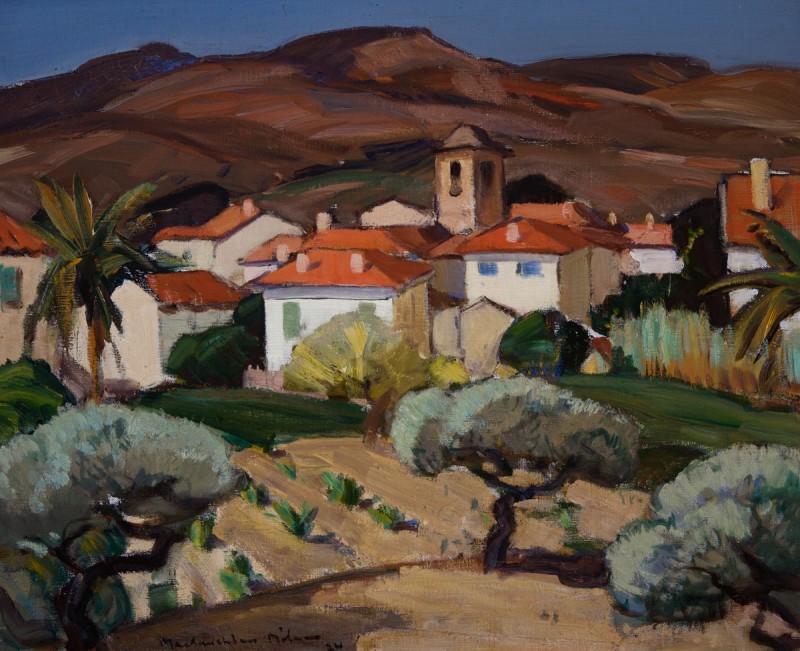
© John Maclauchlan Milne, courtesy of Portland Gallery, London. Image credit: National Trust for Scotland, Culzean Castle, Garden & Country Park
John Maclauchlan Milne (1885–1957)
National Trust for Scotland, Culzean Castle, Garden & Country ParkBaking in hot sunlight, St Tropez works in a similar way except on water.
In L'Estaque, Maclauchlan Milne not only used colour for form, but he also played with perspective to capture the intangible element, in painting terms, of a warm breeze.
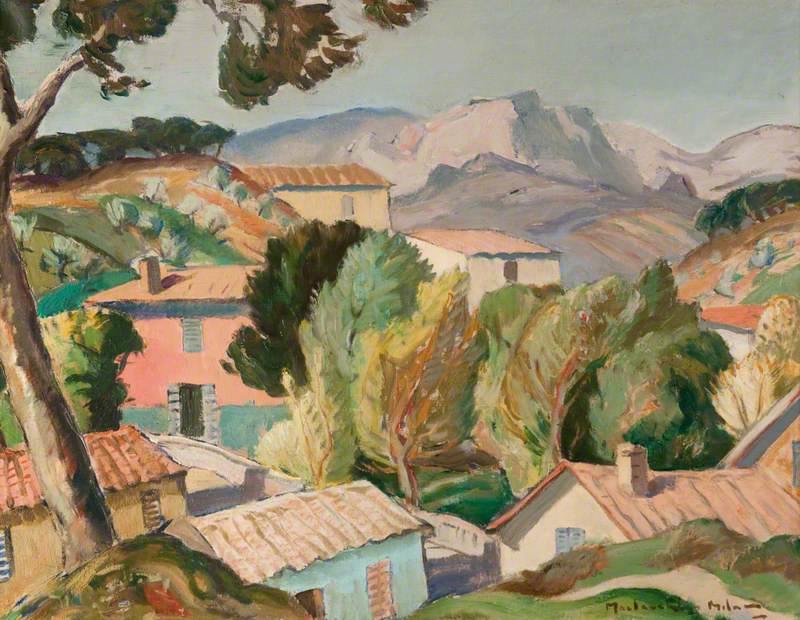
© John Maclauchlan Milne, courtesy of Portland Gallery, London. Image credit: Royal College of Physicians and Surgeons of Glasgow
John Maclauchlan Milne (1885–1957)
Royal College of Physicians and Surgeons of GlasgowMaclauchlan Milne visited the South of France regularly throughout the 1920s, at similar times to each of the Four Colourists, but with the negative effects of the global financial downturn after 1929, selling paintings became more difficult for all of them. In Scotland he continued painting with a Modernist's conviction such as in Landscape, Sutherland, where he took the ancient monumentality of the distinctive peaks of Suilven and Canisp and rendered them in the moment by dowsing them in the sensation of generous sunshine and a fresh breeze.
In Sands of Morar, his diploma work for membership to the RSA in 1937, he grappled with the impermanence of sand. With mountains halted by sea and edged with sand, he skillfully captures the middle-ground buildings huddled and clinging to a sand dune in solidarity with the grasses in the foreground.
By 1940 Maclauchlan Milne had left Dundee to settle on the Isle of Arran where its rugged mountains and gentle rolling coast provided him with abundant raw material. He makes the landscape in North Glen Sannox appear wild and fair at the same time. Jagged peaks tower above moorland softened by a fresh breeze that finally arrives at a sunny outcrop where little trees rise up in response.
Taken a stage further, Harvest Field, Arran gloriously exploits the natural contradiction in Arran's landscape through skilful use of colour, form and texture in its design.
Maclauchlan Milne's bold Colourist paintings were exhibited regularly at the RSA and the RGI until 1956, the year before he died. Together with his father, Joe and uncle, William, across a mere 80 years their art endeavours moved through Realism, a Glasgow Boys delight in colour and materials, and finally to Maclauchlan Milne's startling conversion to Modernism – providing a fascinating and enduring family affair.
Jill Marriner and Maurice Millar
Further reading
Maurice Millar, The Missing Colourist – the Search for John Maclauchlan Milne RSA, self-published, 2022
'Art Exhibition in Dundee, Glimpses of the Riviera', The Courier, Dundee, 31st March 1925, p.9
Obituary of John Maclauchlan Milne RSA, Royal Scottish Academy Yearbook 1957
The Life and Works of John Maclauchlan Milne, The Portland Gallery, London, 2010
Maclauchlan Milne and the Colourist Connection, The Portland Gallery, London, 2017
Bill Smith and Jill Marriner, Hunter Revisited, the Life and Art of Leslie Hunter, Atelier Books, 2012
Bridget Flanagan, Artists along the Ouse 1880–1930, Bridget Flanagan, 2010
L'Immensité – NICE Paintings entry (National Inventory of Continental European Paintings), entry by Ana Debenedetti
Charles Baile de Laperriere, The Royal Scottish Academy Exhibitors 1926–1990, Vol. 3, Hilmarton Manor Press, 1991
Roger Billcliffe, Glasgow Institute of the Fine Arts, 1891–1989, Vol. 3, The Woodend Press, 1992
William Hardie, Scottish Painting, 1837 to the Present, Studio Vista, 1990
Duncan MacMillan, Scottish Art 1460–1990, Mainstream, 1990
